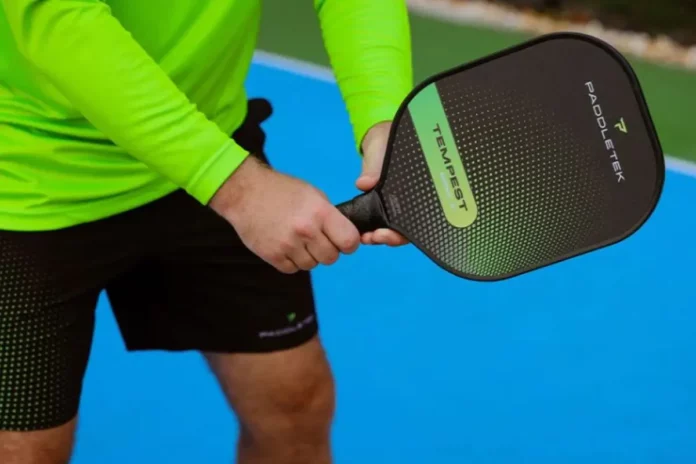Understanding Pickleball Stacking: Pickleball professionals often use a technique called stacking, which helps them make the most of their strengths and cover weaknesses. Barrett and Danea Bass explain when, why, and how to stack, and why it can be a game-changer for recreational players as well.
What is Stacking?
Stacking is a strategy used by pickleball teams, particularly in doubles play, to improve positioning on the court. Instead of switching sides after each serve, players “stack” on the same side to maximize their strengths and exploit weaknesses.
For example, a team may stack if one player has a better forehand or backhand that is best played in the middle of the court.
When to Stack
Stacking is most advantageous when there’s a mismatch in strengths or when players need to cover certain areas of the court better. It’s especially helpful when a left-handed player is involved because the team can use both players’ forehands in the middle, creating a stronger offensive setup.
Stacking can also help players get into positions where they feel more comfortable, allowing them to use their strongest shots more effectively.

How to Stack
The first step in stacking is to know the starting position. If the score is even (e.g., 0, 2, 4), a player starts on one side of the court, while if the score is odd (e.g., 1, 3, 5), the player switches to the opposite side.
The key to stacking is to remain in the same service box instead of swapping sides with the partner after a point. This way, the team maximizes its strengths.
Unwinding the Stack
On defense, unwinding the stack can be tricky. If the score is odd, players might need to switch positions to be in their preferred spots. This process, called “unwinding,” can be done in different ways, such as having one player slide behind the other or stepping off the court before switching places. Hand signals, like a closed fist for staying in position or an open palm for switching, help communicate this change.
Hand Signals and Communication
Communication is essential when stacking. Common hand signals are used to tell the partner if they should stay or switch positions.
A palm with five fingers open indicates a switch, while a closed fist means to stay. Some signals, like a finger wiggle, may be used to fake a switch and confuse the opponents.
News in Brief: Understanding Pickleball Stacking
Stacking is a strategic positioning technique used by pickleball teams to maximize strengths and cover weaknesses, especially in doubles play. Barrett and Danea Bass explain how stacking works—players stay on the same side to optimize shot strengths, while communication is key.
Stacking is most effective when covering mismatches or using left-handed players. Hand signals help manage switches during gameplay.

